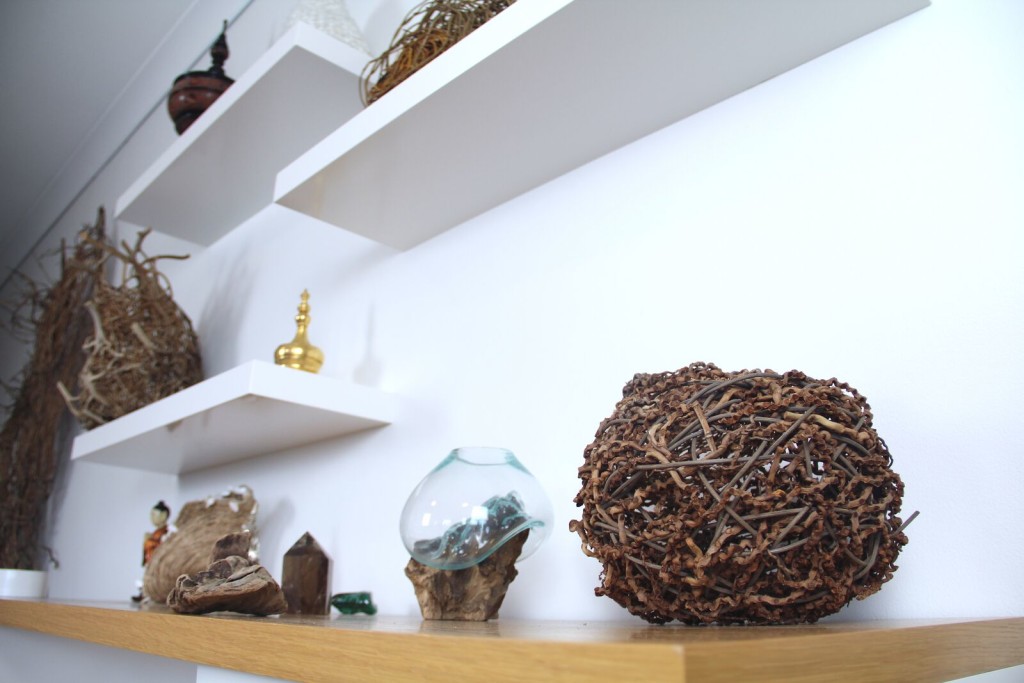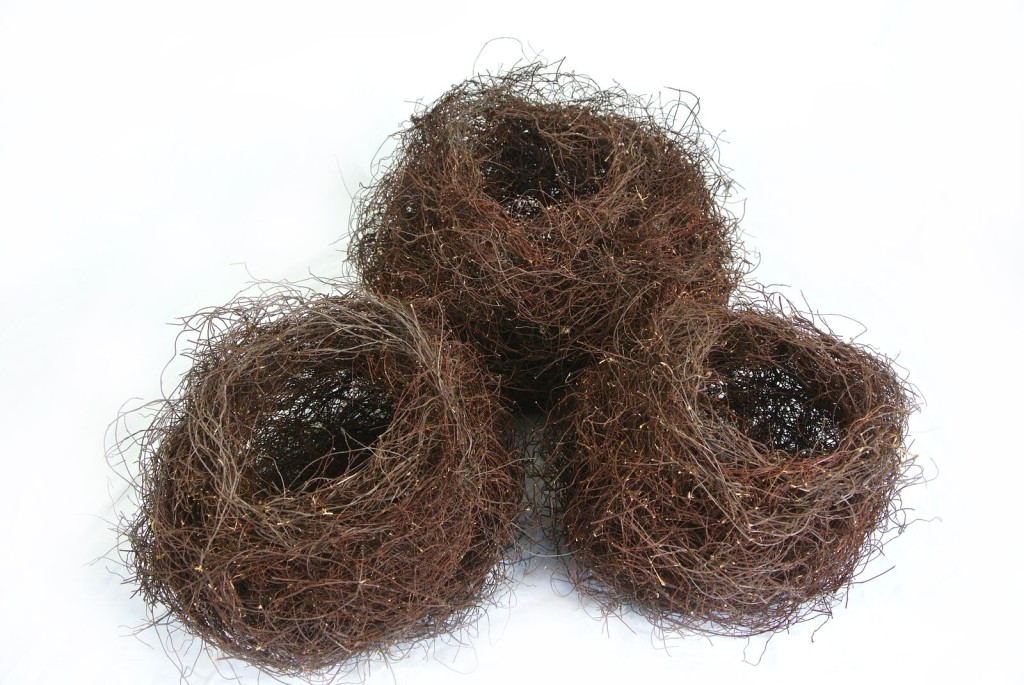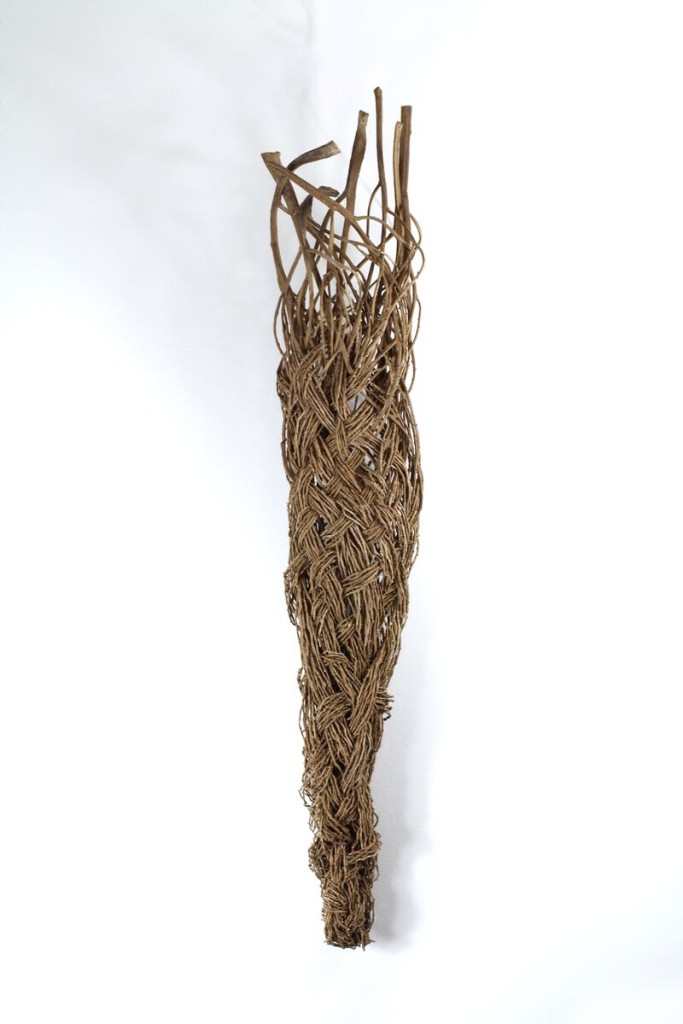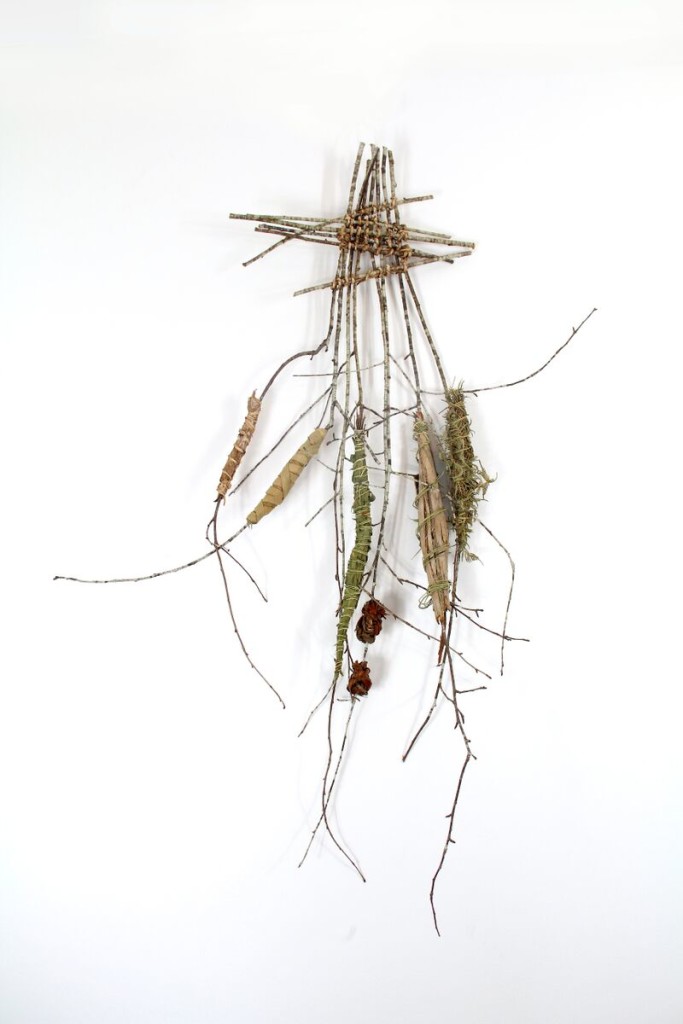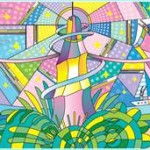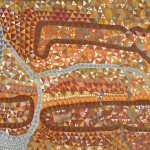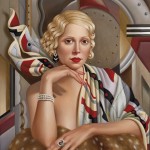By Celeste Hawkins
Catriona Pollard sees the extraordinary in the ordinary. She has been finalist in a number of art prizes and is about to have her first solo exhibition. This emerging artist tells me she is out constantly collecting strange-looking tree roots or bunches of branches on her daily walks. She uses these in her weaving and creates stunning works which have caught the eyes of collectors. Often people who buy her work have a connection to something that is a little unusual and not so traditional.
You picked up weaving just a few years ago–but it’s fair to say that you have probably been weaving in your mind much longer! You describe how you went on a journey through Asia as a child and kept a sample of weaving from Koh Samui. Would you say that this childhood object and the memory of the experience was life changing?
I’ve been aware of basketry for a long time especially since that journey to Asia as a child. However, I never thought I could be an artist because I can’t draw or paint, but I’ve always been interested in art and craft. The exploration of the craft helped me to get to the place where I am now – where I can comfortably call myself an artist. With basketry, I did a few weekend and day workshops but nothing really stuck until I did a weeklong immersion at Sturt Craft Centre in early 2011. It was then that I actually understood where to get materials. A lot of basketry users bought rattan, as well as other materials, which are collected or found. It’s essential to understand what types of plants to use.
I shared an experience with Catriona that I had of playing around, forming shapes with the twisty flexible branches of a local tree that had fallen on the ground. We agreed that not everyone would see the potential!
It’s true! It’s so much about exploration and play and picking up plants and seeing what shapes they can be. For me, I look at branches, leaves, seed pods and imagine what else they could be. It’s truly about seeing beyond what is in front of you. Most people would just walk past and not even notice the branch or seed pod!
You say that you don’t draw, but would you see some of your works as a kind of drawing?
I don’t see it as a drawing. For me, it’s seeing the extraordinary in the ordinary. It’s about seeing the extraordinary in everyday moments. And it’s a type of meditation where you sit still and wait for the beauty to emerge. I go walking most days on the bush tracks where I live. One time I noticed a large piece a ficus root that had fallen off a wall and was being ready to be chucked out. The shape was extraordinary. I’m sure I was the only person who even noticed it and saw its beauty. I see the beauty in exploring–going deeper into the energy of the plant material.
What others experiences have influenced your practice?
I use materials to tell my stories and they represent every facet of me. It’s about exploring and creating pieces that express my relationship with the world around me and the people in my life.
I use nature as a way to connect with people that goes beyond physical beauty, but really touches them in a personal and profound way. I also use my designs to comment our current disconnection with nature. Walking down the street with your only view being the piece of glass in your hand checking Facebook means that you’re missing the moments in time that nature gifts us; a beautiful sunset, the sun through the trees or leaf drifting by in the breeze.
Catriona also tells me that she cherishes fabrics given to her and that she puts them to good use. She has been using material that was given to her by a weaver that has sinced passed and used the sari fabric that was first given to her when she first went to India.
All of my pieces have a sense of “profound” in them in that they’re not just aesthetically beautiful but can be light and shade from an energetic perspective.
I would love to hear about your experiences working with the Tjanpi desert weavers. What sorts of things did you learn about their culture?
Indigenous weavers in Australia are critical from an Australian basketry perspective. They are an important link to Australian culture and the ancient art of weaving. As with many crafts basketry is often be just dismissed as ‘women’s’ work, and I hope my work forces people to move beyond ‘functional craft’ – it adds that contemporary layer to that ancient form of weaving. For the Tjanpi weavers, weaving provides a source of income for women living in remote Central Australia as well as coming together on country to weave and keep their culture strong.
How was it, learning from the desert weavers?
I sat in piles of raffia with them and learnt from them. Most non-indigenous people teach by giving instructions in a structured way. Indigenous weavers don’t teach you in this way; you have to learn by watching. That is the gift they teach, through storytelling and through watching. I feel it’s a very important part of what I do now, and as a part of my culture to respect what these women have done before. I saw some of their amazing work at the MCA in 2012; they created large-scale sculptures that had that storytelling element in it.
Your work is quite diverse, there seems to be no limit as to what you can do! What is the largest installation or single work you have done to date? Do you have a studio?
One in my exhibition is about 2.5meters by 1.5meters. I want to go bigger than that but my studio is a two-bedroom apartment and there are three flights of stairs! I’ve been weaving until about 10:30 every night after my day job, getting pieces finished for my solo exhibition.
Catriona tells me her love for the ficus root and its three dimensional qualities. She also talks about the ‘bangalow palm inflorescence’ which are the seedpods that grow at the top of palms, the long ‘fingery bits’- a lot of work has been made with those pieces. Describing her work as ‘beautifully demanding’, she tells me she has done her 10,000 hours and now has the technical abilities to push it to greater heights.
I would love to dedicate more time to my art. If I could financially afford to do that, I would do it tomorrow. I would love to do some residencies here and overseas and exploring with other people. You never know!
Catriona is doing a free artist talk on sculptural basketry at 11am on Saturday 10 October at Gallery Lane Cove.
Exhibition details:
What: Love.Honour.Cherish
Description: Love.Honour.Cherish is a new emotionally-charged, nature-based sculptural exhibition by emerging contemporary sculptural basket maker, Catriona Pollard, which explores the connection and relationship we have with our environment and the beauty it shares with us.
When: 7-19 October 2015
Where: Gallery Lane Cove, Upper Level, 164 Longueville Road, Lane Cove, Sydney, NSW
Cost: Free
Opening night: 7 October from 6pm

